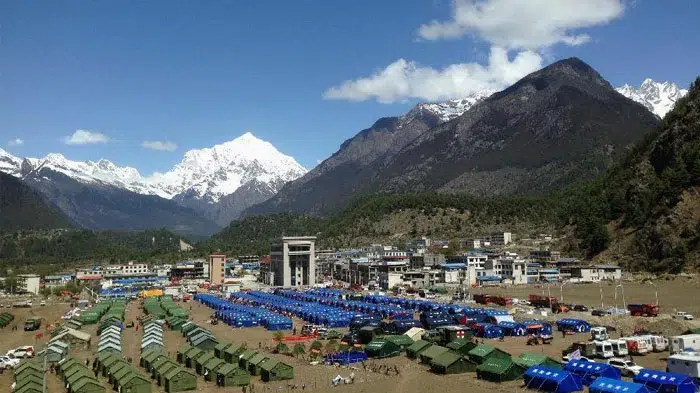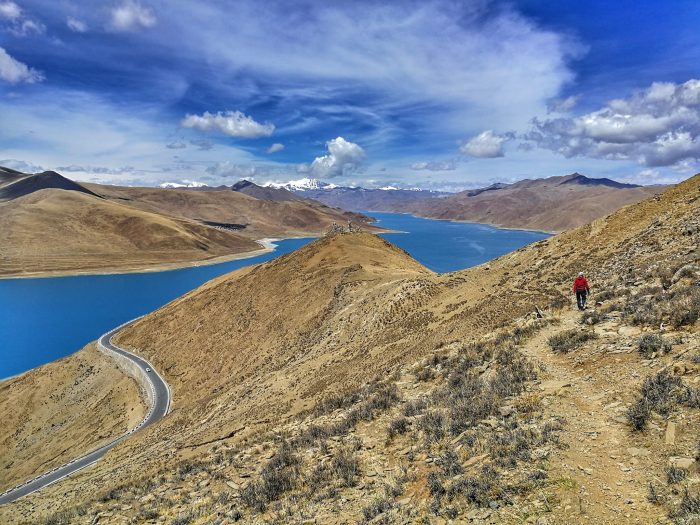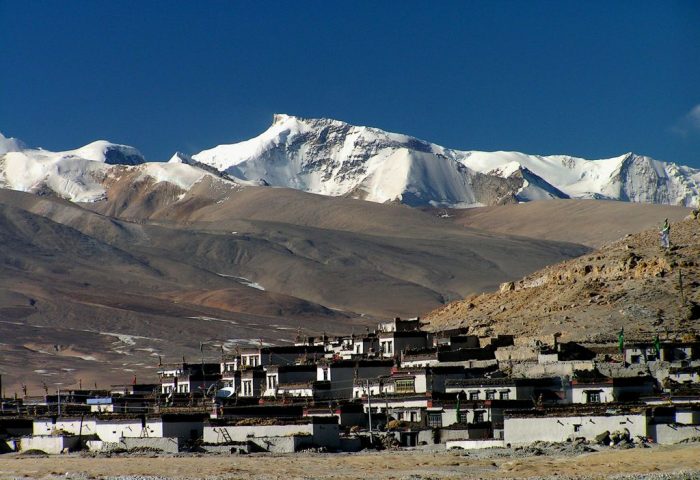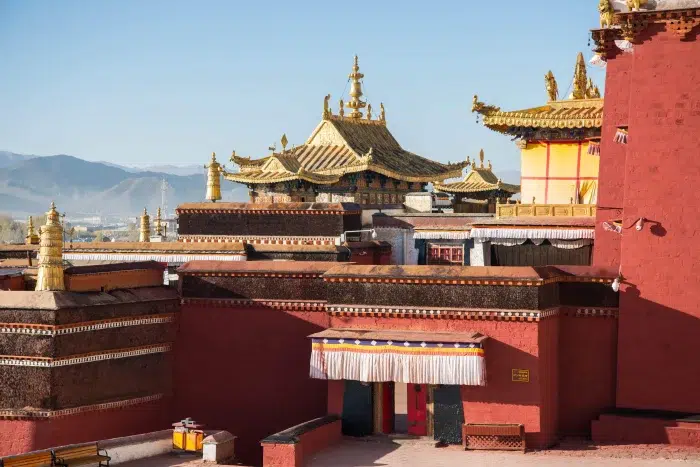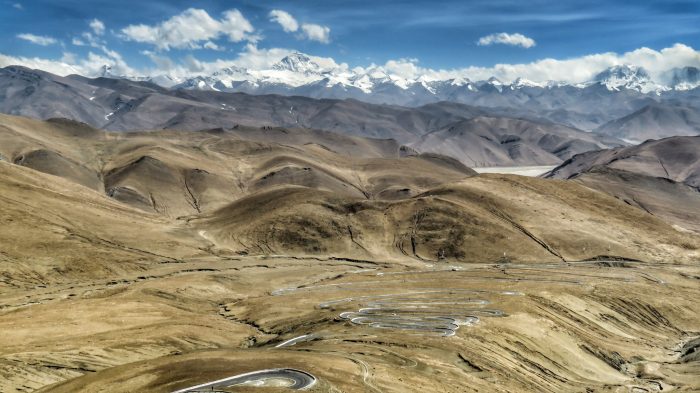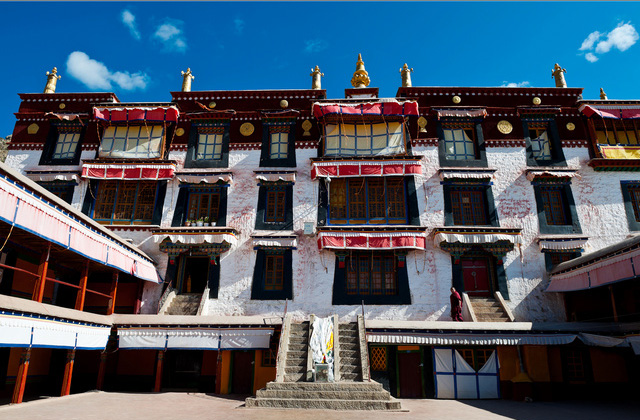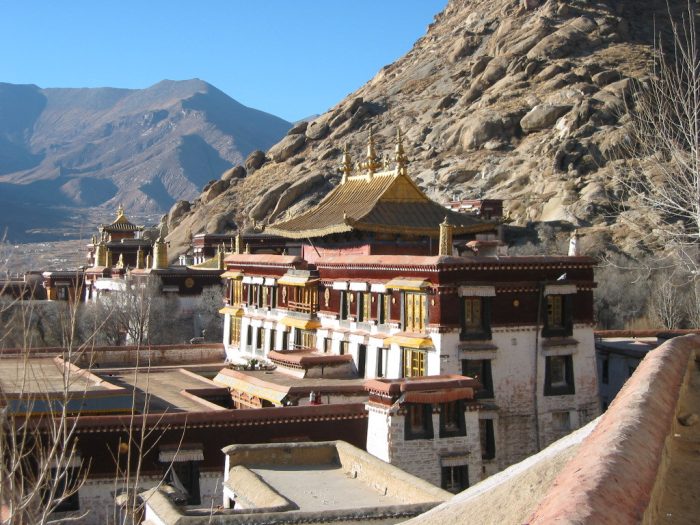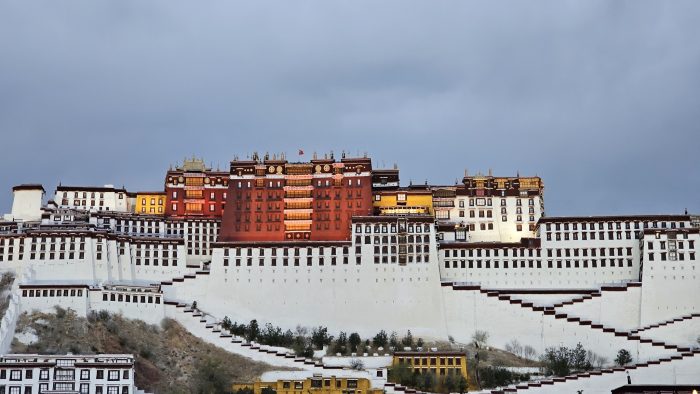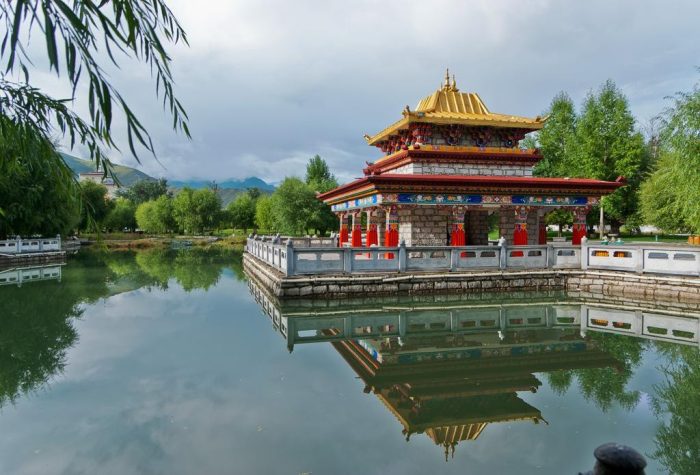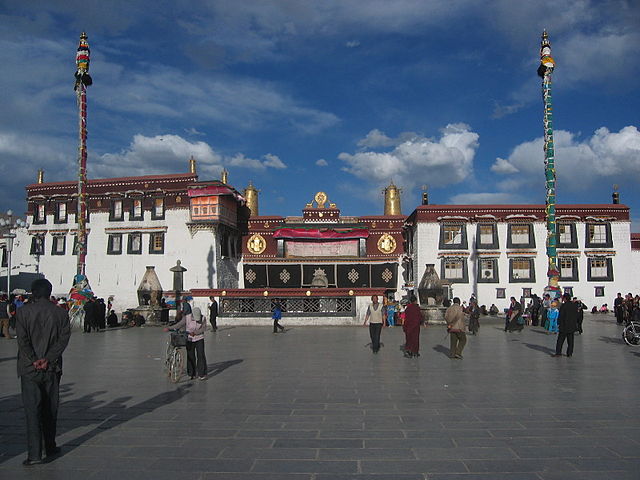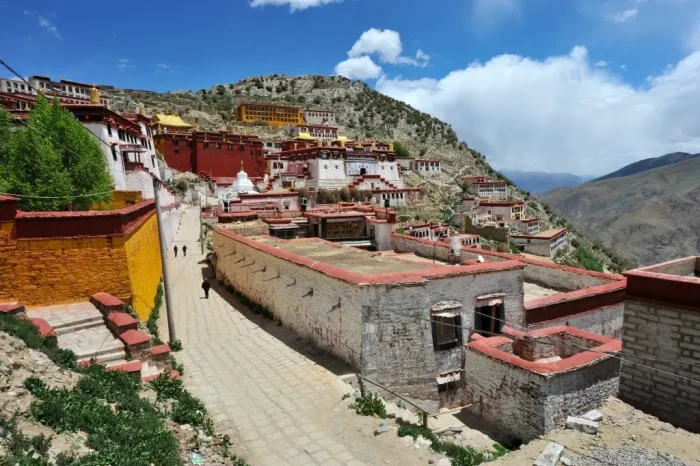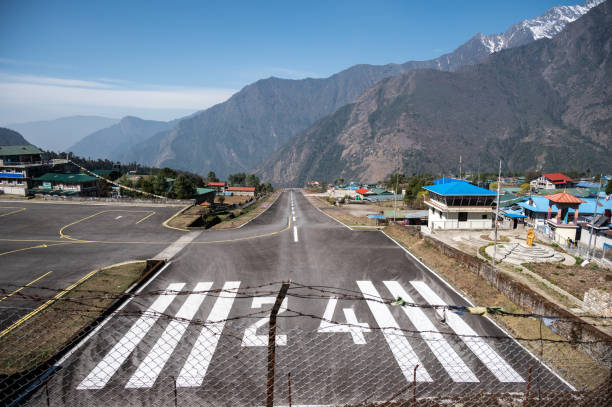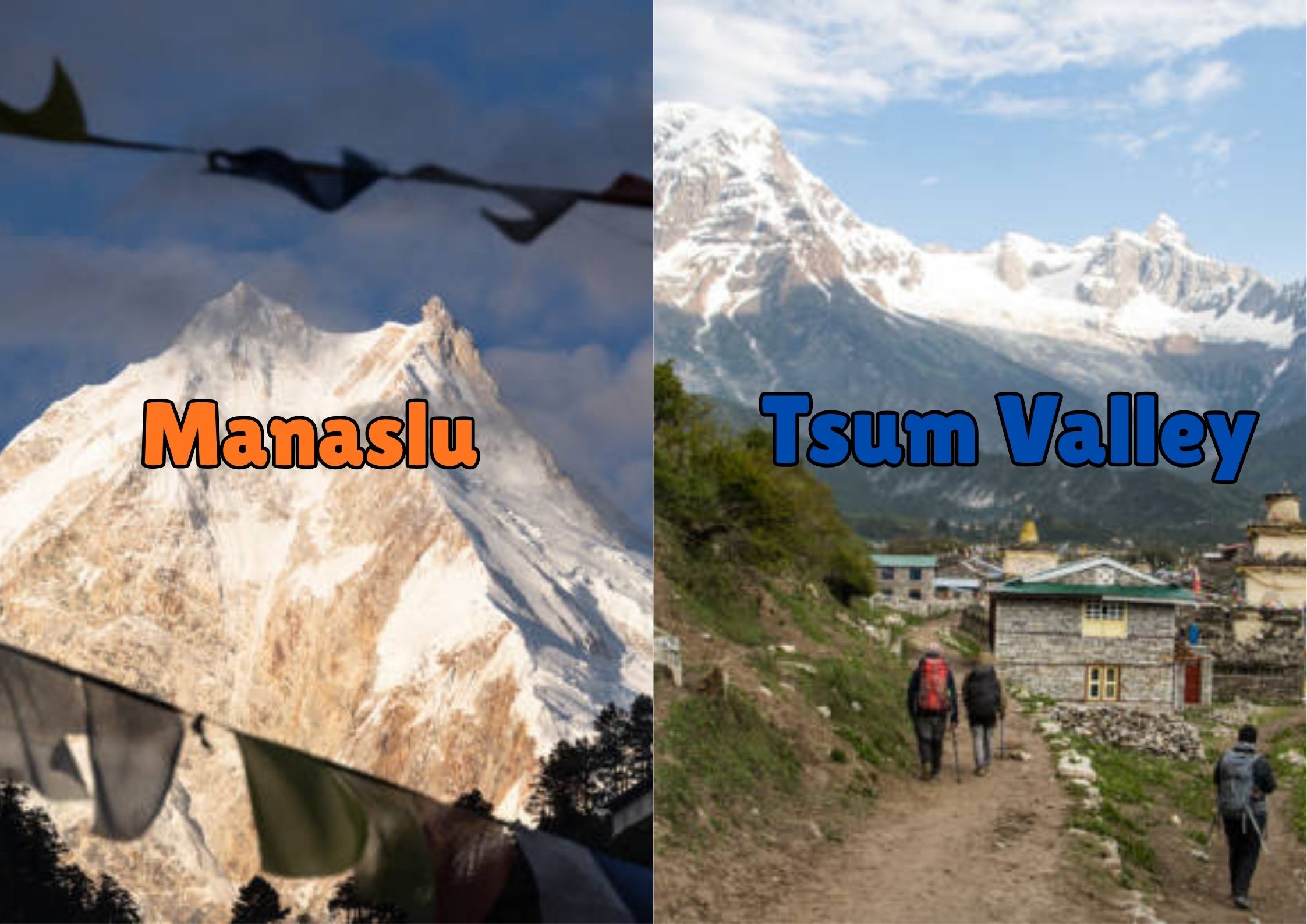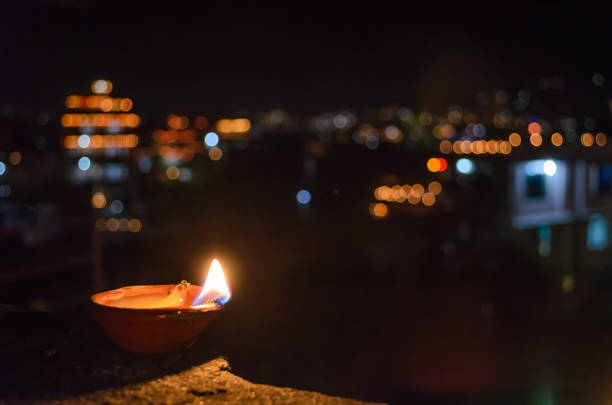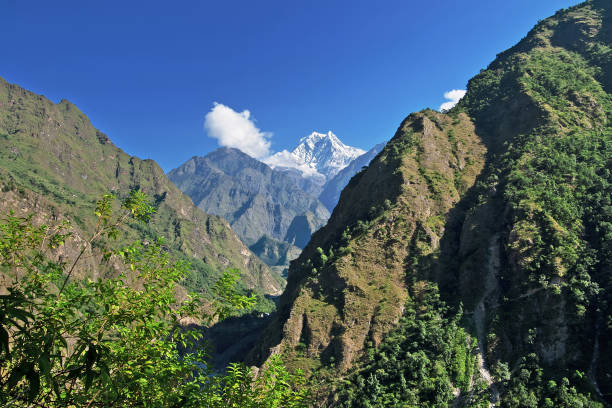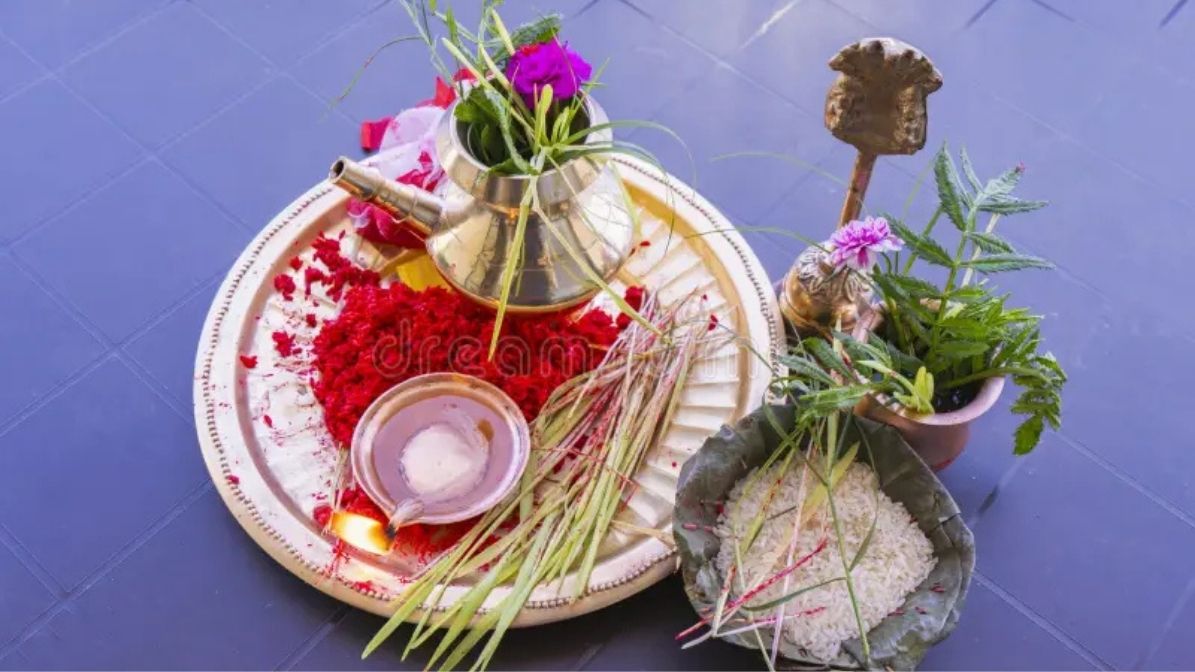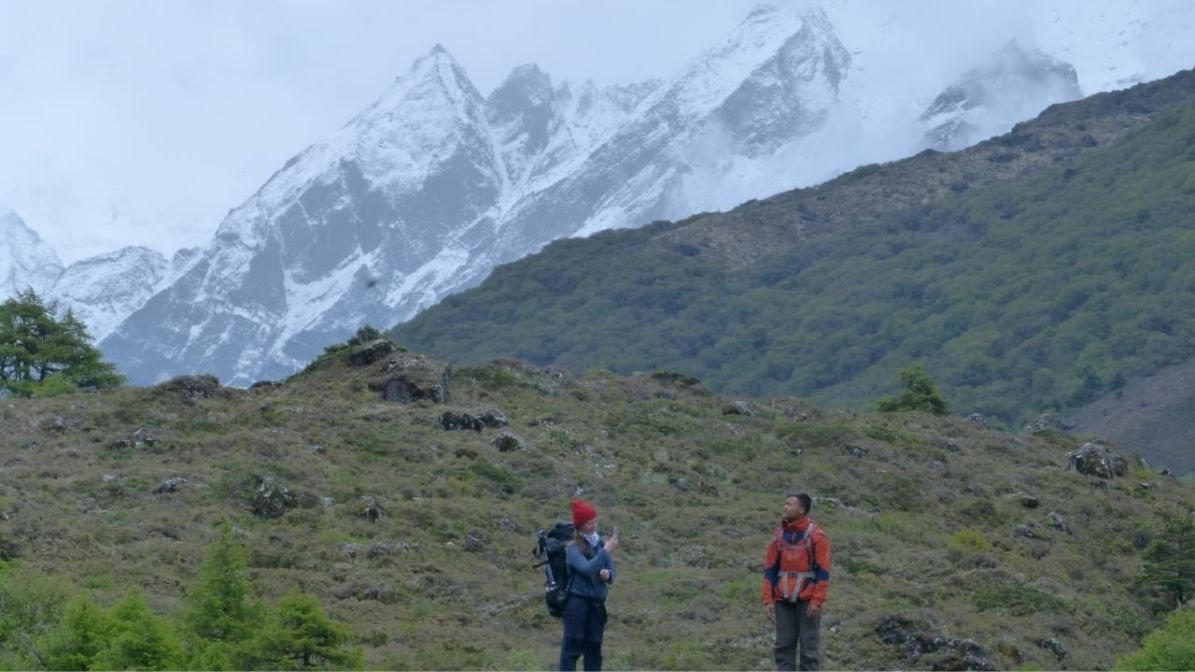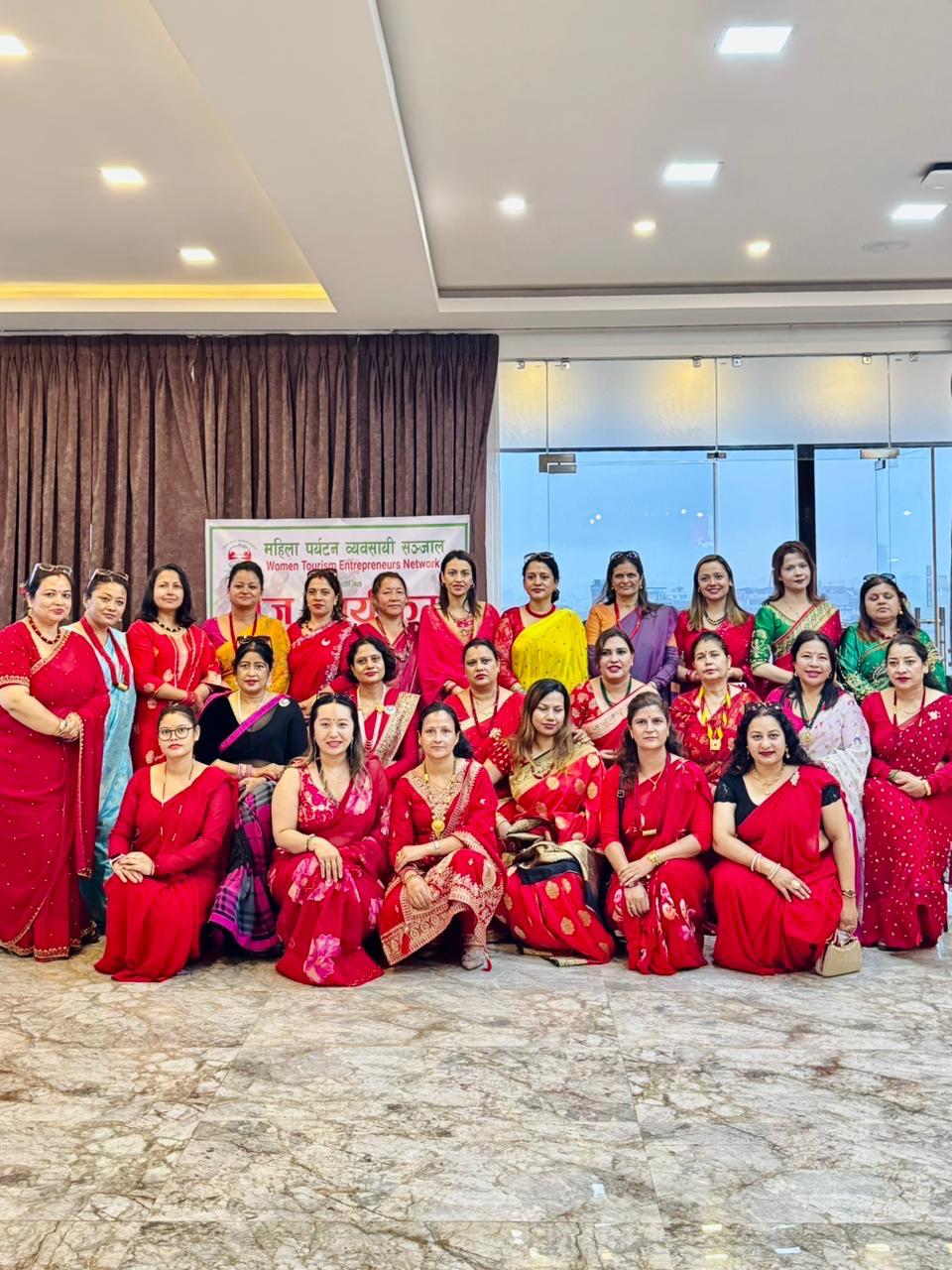Tibet Lhasa Tour: An overland guided tour
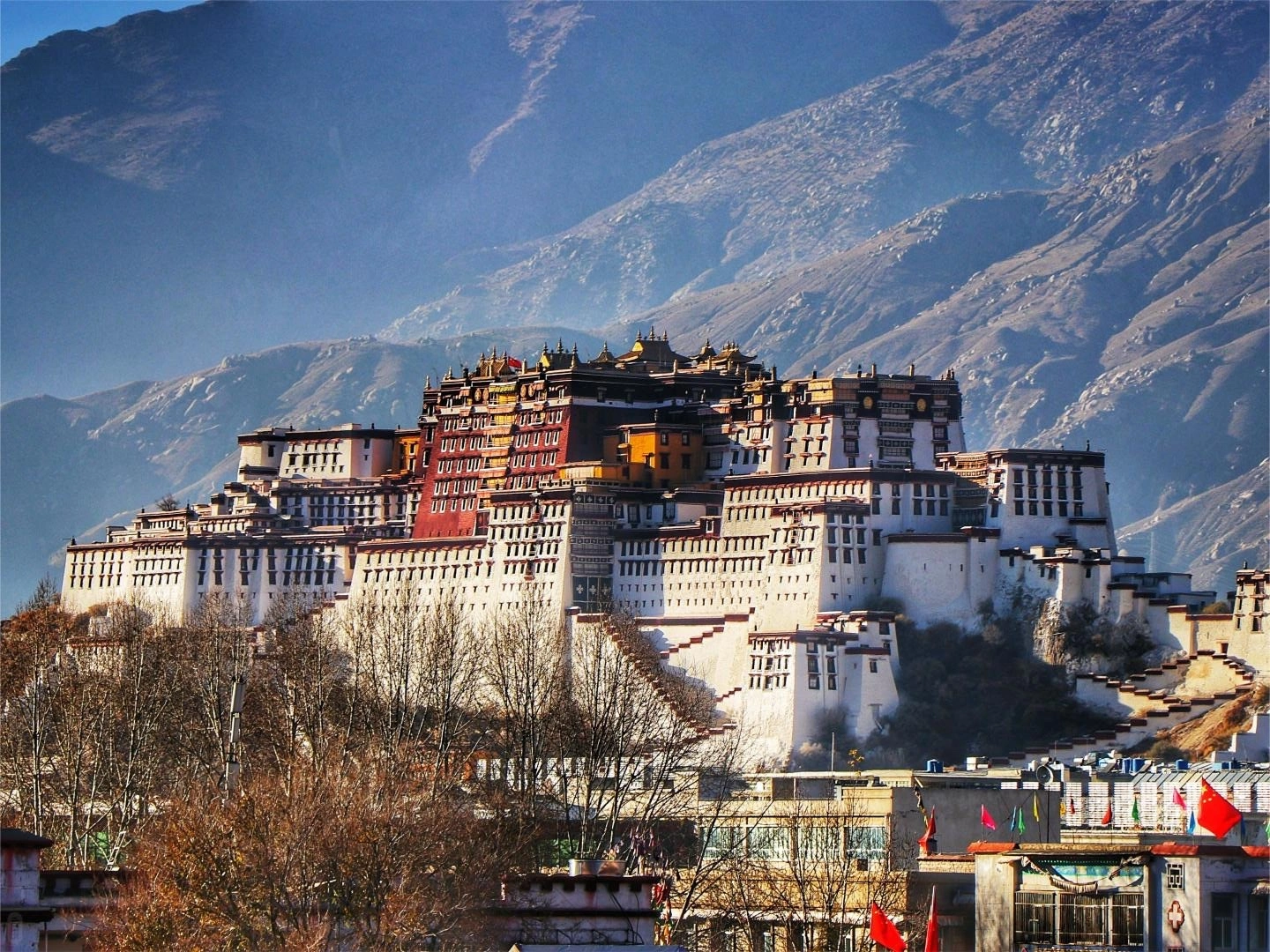
An overland guided tour to Tibet, Lhasa, is a profound experience for travellers. Who wants to explore diverse landscapes, rich history, lively culture, and remarkable architecture? The tour starts in Kathmandu. Leaving from Kathmandu, your adventure starts with an ascent climb with panoramic views of the valley. On a clear, glowing day, distant Himalayan peaks can be seen. Going ahead, you’ll navigate through the edge of Shivapuri Nagarjun National Park, covered with lush green forest.
Moving forward in the journey, your route follows the powerful Trishuli River. Scenic terraced farmlands cover the hill, and you can see sal, pine, and oak trees along the way. In the spring season, rhododendrons flower and cover this forest with a vibrant red color. Dhunche marks a significant point ahead and also a gateway to Langtang National Park.
While stretching to the Rasuwagadhi border, the landscape changes into steep slopes and rocky terrain. The historic Rasuwa Fort is a remarkable sign of an ancient, significant trade route. As you continue your drive, there is less vegetation than in Nepal. After crossing the border at Gyirong, you will drive through the Friendship Highway. And our Tibetan guide will greet you at the border for the next phase of the journey. This road is famous for its stunning mountain views and vast grasslands.
Upon entering Tibet, the landscape transforms from a lush green hill into the vast Tibetan Plateau. You will experience the changes in the air, which become thin and dry. As you ascend higher, the plateau opens up with wide, empty spaces; gentle hills traverse far into the distance. On your journey, you might spot Tibetan antelopes, wild yaks, Tibetan snowcocks, and black-necked cranes.
This whole tour by overland from Kathmandu to Lhasa is much more than a usual journey. It is an opportunity to explore new cultures, experience amazing landscapes, and immerse oneself in the spirit of adventure. As our journey proceeds to the heart of Tibet, Lhasa, I am eager to share the incredible wonders and unexplored riches that await you.
Kerung Town, the first stop of the journey
You will first stop at Kerung town, also called Jilong in Chinese, which serves as the hub for trade and tourism between the two countries. The town is considered the “Town of Forest Valley”. Kerung receives the subtropical mountain monsoon, so there is thick vegetation in this place. Mountain vistas of the magnificent Ganesh Himal Range, Langtang, and Lirung are the attraction points for visitors. Its lower altitude, around 2700m, compared to the other Tibetan places, makes travellers acclimatize for the journey. In the town, you can observe the diverse Nepali and Tibetan ways of life. And as you walk through the street, Nepali restaurants and shops are enclosed everywhere. The most remarkable structure is Tibet’s only temple, constructed in the Nepali style.
High Mountain Roads, Passes, and Turquoise Lakes
On this journey to “The Roof World,” you will drive through some glorious mountain passes from 4000 to 5,200 metres. En route, we will take a short break at Kong Tang Lamu pass to admire the beauty of these landscapes. Views from this height are indeed stunning; it’s incredible to think how they are able to construct roads in this terrain. After that, we’ll move toward Piku Lake, situated at an altitude of 4,591 meters. Its shiny turquoise water is alluring to watch. The drive from Kerung to Saga is astonishing. In the lush green field, you can spot yaks grazing if you visit in the months of April to October. And you can also catch a glimpse of towering Himalayan mountains, like Langtang and Shishapangma, rising above.
Tingri: A Land of History and Himalayan Panoramas
Tingri is beyond a high-altitude plain; it is a place soaked in deep history. Once upon a time, this place was the battleground between Nepal and Tibet. During a major historical conflict, Nepali forces managed to take control of Tingri and nearby areas, like Kuti and Kyirong. After the fighting, some important talks took place. In consequence, the two nations signed an agreement to never invade each other again. Moreover, Tibet agreed to pay Nepal money every year and permitted it to establish its trading post.
Today, Tingri is famous for its Towering mountain views of Everest (8,848 m), Lhotse (8,516 m), Cho Oyu (8,201 m), and Makalu (8,463 m). Which makes it an ideal location for mountain enthusiasts and landscape photographers. You will also spot Tingri Airport on the journey, renowned as one of the highest airports in the world.
During the journey, we will have Lunch in Tingri at a local restaurant situated 4200 meters above sea level. This will be a great experience. Their hospitality and the scenery of the surrounding area make it unforgettable. After lunch, our journey continues as we ascend another high mountain pass called Tong La Pass, situated at 5,100 meters, to reach the Roof of the World.
Shigatse: Heart of Tibetan Buddhism
After a full day’s drive on the road, we finally arrived in Shigatse (also known as Xigazê), Tibet’s second-largest city. The city welcomed us with a lively Nepali restaurant. A traditional kata scarf welcomed us, offering warmth and comfort after a long day’s journey.
We’ll ensure you have a comfortable and cozy stay in a hotel in Shigatse. In the morning, after a short walk, we’ll visit the famous Tashilhunpo Monastery, established in 1447 by the first Dalai Lama. The monastery follows the Gelug traditions and emphasizes monastic discipline, which Je Tsongkhapa started in the 14th–15th century. Once the monastery was home for over 3,800 monks, today only 800 monks continue their spiritual legacy. The monastery houses a renowned giant bronze statue of Maitreya Buddha, adorned with over 1,400 valuable ornaments. It took skilled artists more than four whole years to create this masterpiece.
This monastery holds historic importance as it is the traditional home of the panchen lamas, who are the second major spiritual leaders in Tibetan Buddhism. While visiting, you’ll feel the reverberation of positive energy and admire the decorative artwork. Please note that taking pictures inside is strongly prohibited. However, a visit to this place is heartily recommended for powerful experience
Gyantse & Kumbum Stupa – A historic Tibetan town
Gyantse Dzong, a fortress that stood strong against a British invasion in 1904. It’s a mark as a symbol of the town’s resilience and pride. This multi-story stupa was built by a local prince named Rabten Kunzang Phak in 1427 A.D. It is also part of the Pelkor Chode Monastery complex. With its magnificent architecture, the Kumbum draws visitors into a world of spiritual wonder. This building is designed in a three-dimensional mandala, a sacred figure representing the Buddhist cosmos. Inside it, there are hundreds of thousands of images of Shakyamuni Buddha (the historical Buddha), Maitreya (the Future Buddha), Buddhas of the Three Times, and various other Buddhas. You’ll also find a variety of tantric deities, protective deities, and other figures from the Buddhist cosmological system.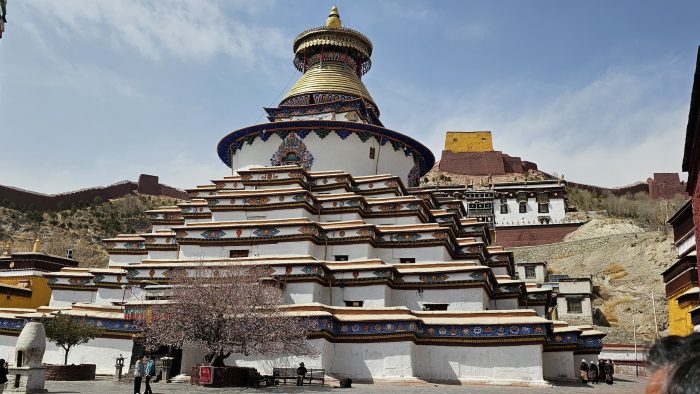
Scenic Road Via Shigatse to Lhasa
During the drive from Shigatse to Lhasa, the largest city of Tibet, it takes about 8-9 hours to cover a distance of 360km. Leaving Shigatse, heading toward Lhasa, is captivating. The panoramic drive through the Mountain passes like Kamba La Pass, around 4,790 meters above sea level, is an overwhelming experience. Along the route, you will see Yamdrok Lake nestled at 4,442m. The longest lake in Tibet, which is 72 kilometers, and one of the highlights in the journey.
Attraction of Lhasa
As we reach Lhasa,” the city of sunlight,” Potala Palace rises in the distance. This stunning landmark marks our arrival in Tibet’s spiritual and cultural heart. After days on the road, the city’s vibrant energy and ancient architecture are a welcome embrace.
Drepung Monastery
Drepung Monastery is recognized as the largest among the six great Gelug Monasteries of Tibet. It was built in 1416 by Jamyang Choge Tashi Palden. At one point, Drepung was a residential place for up to 10,000 monks. Before the construction of the Potala Palace, this monastery also catered to the Dalai Lamas. In the main assembly hall, you can see a towering statue of Maitreya Buddha. The daily routine of the monastery monks includes engaging in prayer assemblies, chanting sessions, and hours of dedicated study.
The annual Shoton Festival (known as Yogurt Festival) falls in the month of August. This marks the completion of a 100-day meditation retreat for monks. On this day, thousands of Buddhist devotees come to receive blessings. You can also join this event if you visit in the month of August.
Sera Monastery
Sera Monastery is one of the ancient places in Tibet. It was founded in 1419 by Jamchen Choje Shakya Yeshe. The monastery is a major center for Buddhist scholars and attracts students from all over Tibet as well as China, Mongolia, and India. Before 1959, over 5000 monks lived here to study Buddhist philosophy and scriptures. The curriculum includes subjects like pramanavartika (epistemology), Madhyamika (Middle Way philosophy), Abhidharma (metaphysics), and Vinaya (monastic discipline).
This monastery is famous for its lively monk debates. These debates happen every day from 3 pm to 5 pm, except Sundays. During a debate, one monk stands and claps while questioning, and the other monks have to sit and logically explain their opinion. Observing this debate isn’t just a tourist activity; it is a chance for you to connect with the culture of Tibetan Buddhism.
The Potala Palace
Lhasa’s famous Potala Palace upholds the history of Tibetan Traditions. The earliest origins of a palace on this site were in the 7th century A.D, built by King Songtsen Gampo for his marriage to Princess Wencheng. But this early palace was destroyed in the 9th century due to wars. The existing palace we see today was reconstructed under the instructions of the Fifth Dalai Lama in the 17th century.
At one time, the palace served as the winter home for the Dalai lamas. This world heritage site is a symbol of Tibetan Buddhism and the region’s sacred history. The palace’s white wall represents peace and tranquility, while its red color wall denotes wisdom and compassion.
Exploring the palace, you can see the massive stone Foundations, thick walls, yak hide curtains, and precise wood carving. This defines the true dedication of Tibetan craftsmanship. While it is not allowed to take pictures, you must see this artistic treasure and the relics in person to admire them. A visit to Lhasa is incomplete without experiencing the Majestic Potala Palace.
Barkhor Street
Barkhor originates from the Tibetan word “bar,” meaning “outside,” and “Khor,” meaning circumambulation. As you wander through the alley of this street, you can observe the Jokhang Temple at its centre. Inside the temple, you can see the sacred statue of Sakyamuni Buddha. Devotees walk clockwise around Jokhang Temple to accumulate good karma and show honor.
Due to the Temple, Barkhor Street attracts many pilgrims and traders, which has led to the development of houses, shops, and hotels. Despite modernization, Barkhor Street has largely preserved its old architectural design and stone-paved roads. This offers visitors a glimpse of ancient Tibet. While roaming around the street, you can notice the daily chores of Lhasa people and can engage in casual talks. I recommend that you buy souvenirs on the Barkhor Street as a memory of your Lhasa tour.
Norbulingka Palace
Norbulingka is known as the ” Treasure Garden” in Tibet. This palace served as the traditional summer home of the Dalai Lamas.The 7th Dalai Lama, Kelsang Gyatso, often visited a spring at this location, which people believed had medicinal healing properties. UNESCO recognizes this site as the largest man-made garden in Tibet. Builders constructed the palace complex in 1740, and it now holds a collection of over 100 rare Himalayan plant species.
Today, Norbulingka is regarded as a peaceful oasis and a museum. Visitors can explore the former Dalai Lama’s living space and admire the Tibetan art, architecture, and spiritual traditions.
Jokhang Temple
King Songtsen Gampo constructed this temple in 652 AD to honor his Nepali bride, Princess Bhrikuti. Newar craftsmen from Nepal were responsible for its creation. created. Initially, it housed a sacred Akshobhya Buddha statue that the queen brought with her. Later, the king’s Chinese wife, Princess Wencheng, added a cherished Buddha image. This symbolised the temple’s connection between Nepal, Tibet, and China. Moreover, it also shows centuries of friendship, cultural exchange, and religious devotion.
Inside the temple, the Jowo Sakyamuni Buddha statue is placed, where people show reverence. It’s regarded as Tibet’s most sacred object. Many offer Butter lamps and khattar( ceremonial scarves). The temple square is always lively with pilgrims, monks, and local gatherings that create a space of vibrant social interaction and spiritual devotions. You will feel the lively atmosphere upon entering the temple.
Ganden Monastery
Ganden Monastery sits high on a mountain at 4,300 metres. It was founded in 1409 by Je Tsongkhapa (Lozang- Dragpa), recognized as the noble founder of the Gelug school of Tibetan tradition. Inside the temple, monks follow their daily routine of prayer, meditation, and study.
The monastery is a very important pilgrimage site. Pilgrims from all over Tibet walk the Ganden kora (Pilgrimage circuit) around the monastery. There are both high and low Kora routes. You can also be involved in this spiritual process for peace of mind. While doing the kora, you can enjoy the stunning panoramic views of Kyichu Valley. As you explore the monastery, you will find the holy sites. These include the Tsochin Assembly Hall, the Ngam Cho Khang, and the Tri Thok Khang, which is a place for tantric practices.
Popular Overland Routes to Lhasa
- Kathmandu to Lhasa (Friendship Highway) – The most scenic route via Everest Base Camp.
- Chengdu to Lhasa (Sichuan-Tibet Highway) – Stunning valleys and high-altitude lakes.
- Golmud to Lhasa (Qinghai-Tibet Highway) – A rugged journey across the Tibetan Plateau.
Permits & Travel Requirements
- Tibet Travel Permit (TTP) – Mandatory for all foreign travelers.
- Alien’s Travel Permit (ATP) – Needed for travel beyond Lhasa.
- Chinese Group Visa – Required if entering from Nepal.
Places to must visit on the way Lhasa Tibet
- Yamdrok Lake – Turquoise waters against snowy peaks.
- Shigatse & Tashilhunpo Monastery – Tibet’s second-largest city.
- Gyantse & Kumbum Stupa – A historic Tibetan town.
Best Time for a Lhasa Overland Tour
1. Spring (April to May): Ideal time for quiet spaces
From April to May, Tibet offers a suitable daytime temperature, usually between 12 to 16 degrees Celsius with clear skies. Yet, the nighttime is still freezing, so pack yourself some warm clothes. This period is perfect for sightseeing because there is less touristy crowd than in summer. This gives visitors a pleasant experience for visiting monasteries. Plus, flowers begin to bloom during this month, making it an appropriate time for photography. Visiting this month could make your trip more budget-friendly.
2. Summer (June to August): best for sightseeing and festivals
During the summer, Tibet experiences its warmest weather. In daytime temperatures usually average a pleasant 20 °C to 24 c. While Lhasa does get rain during the monsoon season, it typically happens at night. This means you’ll usually have a mild and comfortable temperature for your daytime visits.
To admire the lush green landscapes and see more blooming flowers, summer is the perfect time. These months are also the most suitable for outdoor activities like trekking, hiking, and monastery kora (pilgrimage circuits). Plus, if you visit in August, you can experience festivals like the Shoton festival and the Nagqu Horse Racing. While it is peak season for tourist visits, the accommodation and transportation costs are slightly higher than at other times.
3. Autumn (September to October): Ideal for Trekking and Photography
Autumn, from September to October, is the time when you experience pleasant weather conditions. During this period Temperature went up to 17c to 20c. The chance of rainfall is also very low, which creates a favourable environment to visit Lhasa. Visitors can enjoy the warm weather and lush hills of the countryside. This cool weather with crisp air and clear skies is the perfect time for exploring trekking trails and landscape photography.
If you plan to visit in autumn, be sure to book your ticket, hotel room, and transportation in advance. While it is not the peak season like summer, it is still a popular time for tourist visits.
Food and Accommodation in Lhasa, Tibet
Food on a Lhasa Overland Tour:
Accommodation on the overland Lhasa journey.
- Tsampa: Tsampa is the most common and fundamental Tibetan diet food. It is generally prepared from roasted barley flour. Tibetans like to eat it by mixing it with butter tea. People know it as a quick energy meal.
- Yak meat: Yaks are the typical domesticated animal in Tibet. Tibetans use yak meat as their main source of protein. If you like to eat, you’ll find a variety of types, such as air-dried strips, stews, or stir-fries.
- Momos: A Type of Tibetan dumpling found in restaurants across Tibet. The filling inside these dumplings is yak or mutton meat, yet you can also find vegetable or cheese fillings. They can be prepared with either method, either steamed or fried.
- Thukpa/Thenthuk: They are very warming and satisfying noodle soups. Cooks prepare these using a rich broth made from yak bones, mixed with different vegetables.
- Tibetan Hotpot: It is a dish shared among several people. Mainly, various ingredients are put on the table and dipped into the boiling water to eat. That includes meat such as yak, mutton, or pork, and sometimes mushrooms.
- Tibetan yogurt: Tibetan yogurt is a type of drink made from yak milk. It is sour and often served with sugar to balance the tartness
- Butter Tea (Po Cha): This is a traditional Tibetan Tea, drunk in daily life. It’s made from yak butter and salt, which is savory in taste. It’s very essential at high altitude to stay warm and hydrated.
- Sweet Tea (Cha Ngamo): It’s made with black tea, milk, and sugar. This is different from the salty butter tea. Foreign visitors often prefer this sweet, milky tea, as the salty taste of butter tea can be unusual for them.
Lhasa has many places to stay.
You can choose from budget guesthouses or luxury 5-star hotels. Many hotels in Lhasa adhere to certain standards to host foreign travellers.
- 3-Star Hotels: For group tours, these hotels are a top pick. They offer comfy, modern rooms with all the basics like AC, Wi-Fi, and tea kettles. You’ll also get a buffet breakfast. Plus, many are Tibetan-owned and feature traditional decor, giving you a deeper cultural experience
- 4-Star and 5-Star Hotels: During your tour, if you want more comfort and great facilities, these 4-star and 5-star hotels are recommended. They provide you with a big room with lots of extra amenities. Since Lhasa is high up in the mountains, these hotels provide oxygen machines and humidifiers to help you feel relaxed. You can also enjoy facilities like health clubs, swimming pools, and several restaurants. A nice bonus is that some hotels offer amazing views of the famous Potala Palace! Plus, you’ll find well-known luxury hotel brands like Shangri-La and St. Regis to choose from.
Essential Tips for the Journey
-
Permits and visas are paramount:
- Tibet Travel Permit: Everyone visiting Tibet from another country needs a special “Tibet Travel Permit.” You can only get this by booking your trip through a proper travel agency in Tibet. They’ll handle all the paperwork for you!
- Chinese Group Visa (if coming from Nepal): If you’re entering Tibet from Nepal (right here in Kathmandu!), you’ll need a “Chinese Group Visa.” This is different from a regular Chinese visa. Only your tour agency can apply for it for you at the Chinese Embassy in Kathmandu. You’ll need to stay in Kathmandu for about 4-5 working days before your tour starts while they get this sorted. Note: DO NOT apply for a regular Chinese visa if you’re coming from Nepal, because it will be cancelled!
- Nepal Visa: First things first, make sure you have a valid visa to get into Nepal.
- Time frame: Start applying for all these permits and visas early – give yourself at least 20-30 days before you plan to leave. It’s always best to be prepared!
-
Acclimatization is crucial:
- Move slowly: Travelling overland helps your body to acclimatize to high altitude than flying straight to Lhasa. Reducing the chance of AMS( Acute Mountain Sickness).
- Take it easy in Lhasa: Once you reach Lhasa, calm down for your first day or two. Don’t do anything too tiring, avoid long walks, and stay away from alcohol. Just relax!
- Drink water: Make sure to drink 2-3 liters of water every day while you travel, and also have herbal tea. Try to avoid alcohol and caffeine.
- Symptoms of AMS( Acute Mountain Sickness): the signs of altitude sickness like a headache, feeling sick, dizziness, tiredness, or trouble sleeping.
- Consult a Doctor: Talk to your doctor about medicine to prevent altitude sickness ( like Diamox) before your trip. It’s better to have it with you, just in case.
-
Packing Essentials:
- Clothing: In high-altitude areas, temperatures can change often, so pack layers of clothing that are easy to wear and remove. Include jackets, down jackets, and thermal wear.
- Sun protection: At high altitude, the sun is extreme; wear UV protection glasses and a wide-brimmed hat.
- Comfortable footwear: While sightseeing in monasteries and trekking, comfortable walking shoes are essential.
Medical kit: Carry your medicine if you are using it, also include pain relievers, band-aids, and rehydration salts. - Personal care: wet wipes, hand sanitiser, lip balm (for dry air), and a good moisturiser.
- Power Bank: Electricity can be irregular in remote areas. Bring a portable power bank for your electronic devices.
- Camera tools: To capture Stunning landscape photographs, bring extra batteries, memory cards, and cleaning clothes.
- Light Snacks: Get some energy bars, nuts, and dried fruit for a long drive journey.
-
Road Conditions and Travel Time:
- Road Conditions Vary: Road conditions: In china side, Friendship Highway is smooth and paved. However, on the Nepal side, road conditions are rough and unpaved.
- long-distance travel: Traveling to Lhasa by road is a long day of driving, so prepare for the scenic journey.
- Motion Sickness: If you tend to get carsick, make sure to bring your motion sickness medicine.
-
Cultural Sensitivity:
- Appreciate local Customs: Dress appropriately while visiting monasteries and temples, and also remove hats and shoes when entering sacred sites. Respect the local traditions and practices.
- Photograph: Take permission before taking photos of local people and monks. Some monasteries have restrictions on taking photos.
- Political Sensitivity: Avoid talking about political topics. Do not engage in any political activities or distribute political materials.
- Buddhist norms: Walk clockwise while doing kora around monasteries, stupas, or other holy sites.
-
Health and Safety:
- Travel Insurance: You need to get Travel insurance that covers all-inclusive high-altitude Medical emergencies.
- Emergency Contact: Save the contacts of your tour operator, embassy, and family in case of emergency.
Guide’s Instructions: Follow the guide instructions, as they have experience in handling various issues that arise. - Food Safety: Eat at reputable places, and stick to bottled water.
FAQS for the lhasa overland tour
1. How many days are needed for a Lhasa tour?
A ten-day tour is preferable to explore Lhasa’s key attractions like the Potala Palace and Jokhang Temple. In ten days, you can get deeper knowledge about Tibetan culture and traditions.
2. Why travel to Lhasa?
It’s a unique blend of history and natural beauty with sacred and rich Tibetan Buddhist culture.
3. What is the most favorable time to travel to Lhasa?
The best time to travel to Lhasa is from May to October, with good weather and festivals like Shoton occurring. Winters (Dec to Feb) are cold but less crowded.
4. What are the visa processing formalities, and how long does it take?
For foreign travelers, you need to get a Chinese Visa and a Tibet Travel Permit. It usually takes 15-20 days.
5. What are the cultural and dining taboos in Lhasa?
Avoid touching heads, which are considered sacred, and pointing feet at religious objects. Dining taboos include wasting food in monasteries.
6. How to get a permit for traveling to Tibet?
You can get a permit through licensed tour agencies, but you cannot apply for a permit by yourself. Give your passport and China Visa details to your agency in advance.
7. What local cuisine should one try in Lhasa?
One should try Tibetan Momos (dumplings), yak butter tea, Tsampa, yak meat, and sweet yogurt in Lhasa.
8. Is altitude sickness a dangerous part of Lhasa travel?
Yes, altitude sickness is a dangerous part of Lhasa travel because it is at 3,650m above sea level. Acclimatize at a slow pace to prevent altitude sickness.
9. How can we experience the culture and spiritual presence of Lhasa?
You can experience cultural and spiritual presence by visiting monasteries and attending a ritual. Also, you can go to see the Buddhist debate at Sera monastery.
10. What festivals are celebrated in Lhasa, and when do they occur?
Festivals like Losar (Tibetan New Year) in Feb-Mar, and Saga Dawa in May-June are celebrated in Lhasa.
11. Is it possible to visit Lhasa in winter?
Yes, but temperatures drop below freezing points and so pack warm clothes if you visit in winter. Fewer tourists and clear mountain views make it a serene, reasonable time.
12. What is the local host’s reaction to guests in Lhasa?
Local hosts warmly welcome and respect visitors when they arrive in Lhasa.
13. What lifestyle do locals follow for their livelihood in Lhasa?
Local people depend on farming, herding yaks, and tourism-related work. As well as handmade crafts and thangka paintings are good income sources in Lhasa.
14. Is an overland journey safe, or is taking a flight safer for Lhasa travel?
Both journeys are safe. By flight, you can reach your destination earlier than by land. However, by land, you experience the picturesque landscape of Tibet.
15. Which river flows through Lhasa, Tibet?
The river known as the Kyichu River is the main flowing river considered sacred by the people of Tibet.
Conclusions
This remarkable tour to Lhasa, Tibet is an awesome Journey to experience the celestial lake, enigmatic rivers, and breathtaking landscapes. The warmth, hospitality of the Tibetan people and their rich history will touch your hearts and leave you with an unforgettable memory. I hope this blog post will create curiosity and inspire you to discover Tibet, Lhasa’s heritage, and natural wonders by yourself.
Namaste, Tashi Delek

